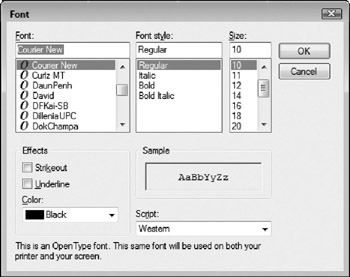

- #Word vs word pad full#
- #Word vs word pad windows 10#
- #Word vs word pad code#
- #Word vs word pad Pc#
- #Word vs word pad windows 7#
Archived from the original on 11 April 2013.

#Word vs word pad windows 7#
In Windows 7 the program's user interface was updated to use a ribbon, similar to those in Microsoft Office. Native Office Open XML and ODF 1.1 support was implemented in the Windows 7 version of WordPad. For viewing older (Word 97–2003), and Office Open XML, documents, Microsoft recommends free-of-charge Microsoft Word Viewer. In Windows Vista support for reading Microsoft Word DOC files was removed because of the incorrect rendering and formatting problems, and because a Microsoft security bulletin reported a security vulnerability in opening Word files in WordPad. These and later Windows versions implement the RichEdit control, allowing WordPad to support extensible third-party services built using the Text Services Framework (TSF), such as grammar and spellcheck.
#Word vs word pad Pc#
Windows XP Tablet PC Edition SP2 and Windows Vista include speech recognition, allowing dictation into WordPad.
#Word vs word pad windows 10#
Windows 10 and later versions support voice typing. As a security measure Windows XP Service Pack 2 and later versions of Windows and its service packs reduced support for opening. Files saved as Unicode text are encoded as UTF-16 LE. Also, unlike previous WordPad versions, it cannot save files in the. It can open Microsoft Word (versions 6.0–2003) files, although it opens newer versions of the.
#Word vs word pad full#
WordPad for Windows XP added full Unicode support, enabling WordPad to support multiple languages, but big endian UTF-16/UCS-2 is not supported. The default font used in Windows 95 to Windows Vista was 10 pt Arial in Windows 7 it was changed to 11pt Calibri.

It is still available for download from the MSDN website.
#Word vs word pad code#
The source code to WordPad was also distributed by Microsoft as a Microsoft Foundation Class Library sample application with MFC 3.2 and later, shortly before the release of Windows 95. WordPad was introduced in Windows 95, replacing Microsoft Write, included with all previous versions of Windows (version 3.11 and earlier). OpenDocument text format added in Windows 7 Office Open XML Document formats added in Windows 7 Microsoft Word Binary File Format support for this format was removed in Windows Vista Its icon resembles an early Microsoft Word icon.

Ī similar word processor, also called WordPad and with simple functionality, is supplied by some vendors on a Windows CE pre-installation. In Windows XP SP1 and later, and Windows 7, it uses RichEdit 4.1. In Windows 95, 98, and 2000, WordPad uses Microsoft's RichEdit control, versions 1.0, 2.0, and 3.0, respectively. Earlier versions of WordPad also supported the "Word for Windows 6.0" format, which is forward compatible with the Microsoft Word format. WordPad does not support all the features defined in the RTF/Word 2007 specification. Likewise, the code point of a character from another application can be determined by copying it into Wordpad followed by Alt+ X. It is unsuitable for work that relies heavily on graphics and typesetting, such as most publishing-industry requirements for rendering final hard copy.Ī character not on the keyboard can be entered into Wordpad by typing its hexadecimal code point in Unicode followed by Alt+ X. WordPad is suited to taking notes writing letters and stories and use on various tablets, PCs, and smart phones. Pasting into WordPad from an HTML document, such as a Web page or email, typically automatically converts most or all of it to RTF, depending partly on the Web browser from which the text is copied. It is simpler and faster than a richly-featured word processor, with low system resource use. WordPad can read, render, and save many Rich Text Format (RTF) features that it cannot create, such as tables, strikeout, superscript, subscript, "extra" colors, text background colors, numbered lists, right and left indentation, quasi-hypertext and URL linking, and line-spacing greater than 1. It does not support footnotes and endnotes. WordPad can format and print text, including font and bold, italic, colored, and centered text, and lacks functions such as a spell checker, thesaurus, and control of pagination.


 0 kommentar(er)
0 kommentar(er)
